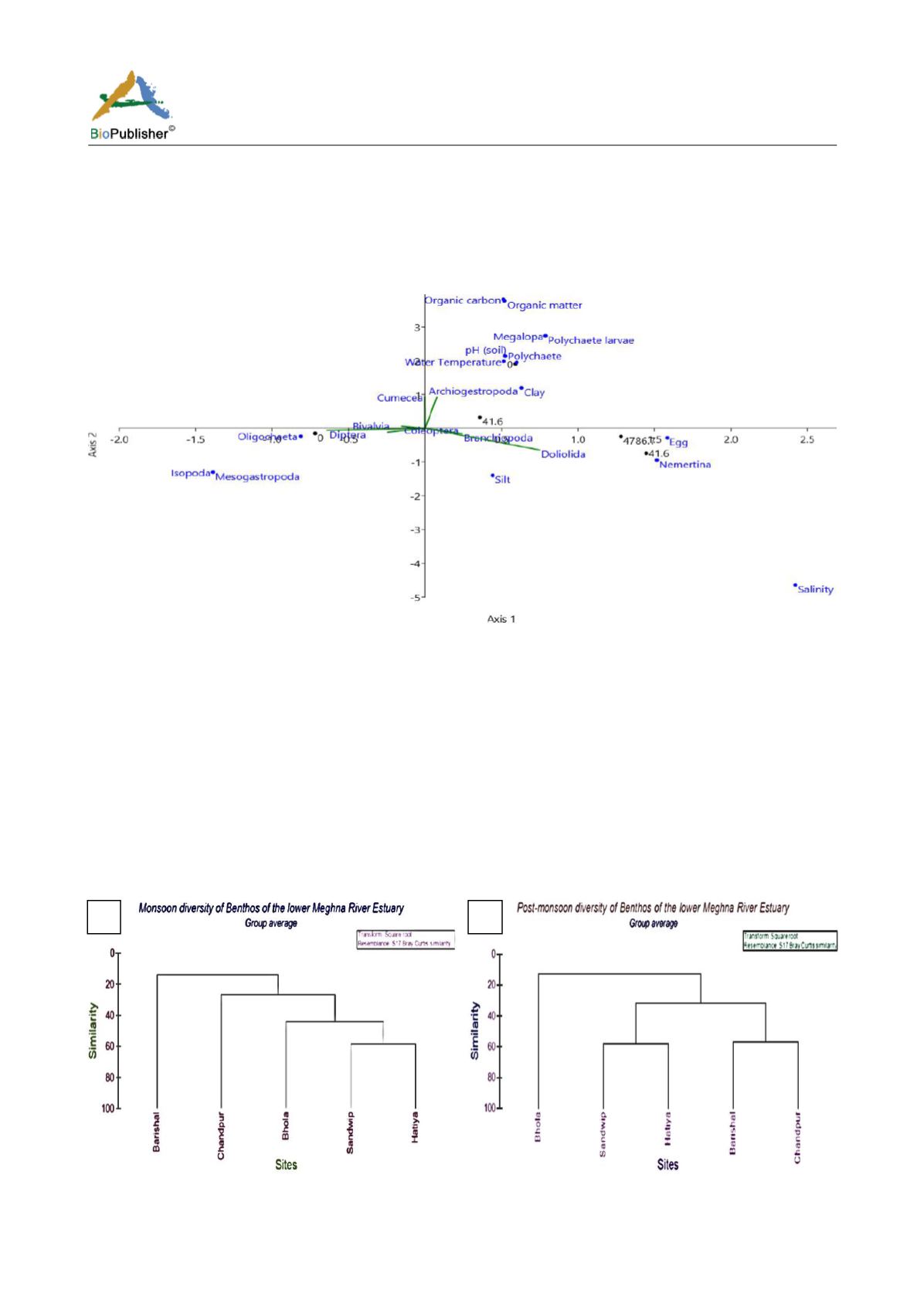
International Journal of Marine Science, 2017, Vol.7, No.12, 102-113
108
During the post-monsoon season, most of the benthos showed low affinity to salinity (Figure 4). The analysis
showed Archiogestropoda, Cumacea, Megalopa, Pollychaetes, Pollychaetes larvae have close positive
relation with clay, water temperature, soil pH, organic matter and organic carbon. There is negative effect of
silt with Branchiopod, Doliolida, Egg, and Nemertean. Again some of the benthos group like Bivalves,
Coleopterans, Diptera, Mesogastropoda, Oligochaeta, exhibited no influenced by environmental factors
during post-monsoon (Figure 4).
Figure 4 RDA triplot showing relation between physicochemical parameters and benthos during post-monsoon season
Therefore, a complete study on the inter-relation among the macrobenthos and environmental factors was
performed for each season, and the triplot in the RDA was helpful in both picturing all the data points plotted
in the coordinate system and diagnosing the inter-relationship among benthos andenvironmental factors.
2.4.2 Cluster analysis
Cluster analyses (CA) were executed using square root and Bray Curtis Similarity to show the similarity among
the sites in terms of benthos occurrence. The dendogram of the benthos, based on their occurrence and abundance
pattern along with different seasons, helped extensively in understanding the similarity in their distribution in the
estuary. During the monsoon season Hatiya and Sandwip formed a cluster that means they are almost similar in
case of benthos distribution (Figure 5a). During post-monsoon Hatiya and Sandwip as well as Chandpur and
Barisal formed cluster indicating that they are similar in terms of benthic community occurrence (Figure 5b).
Figure 5 Bray-Curtis similarity-based hierarchical clustering of macrobenthos during the (a) monsoon and (b) post-monsoon periods
at 5 different sites
a
b


